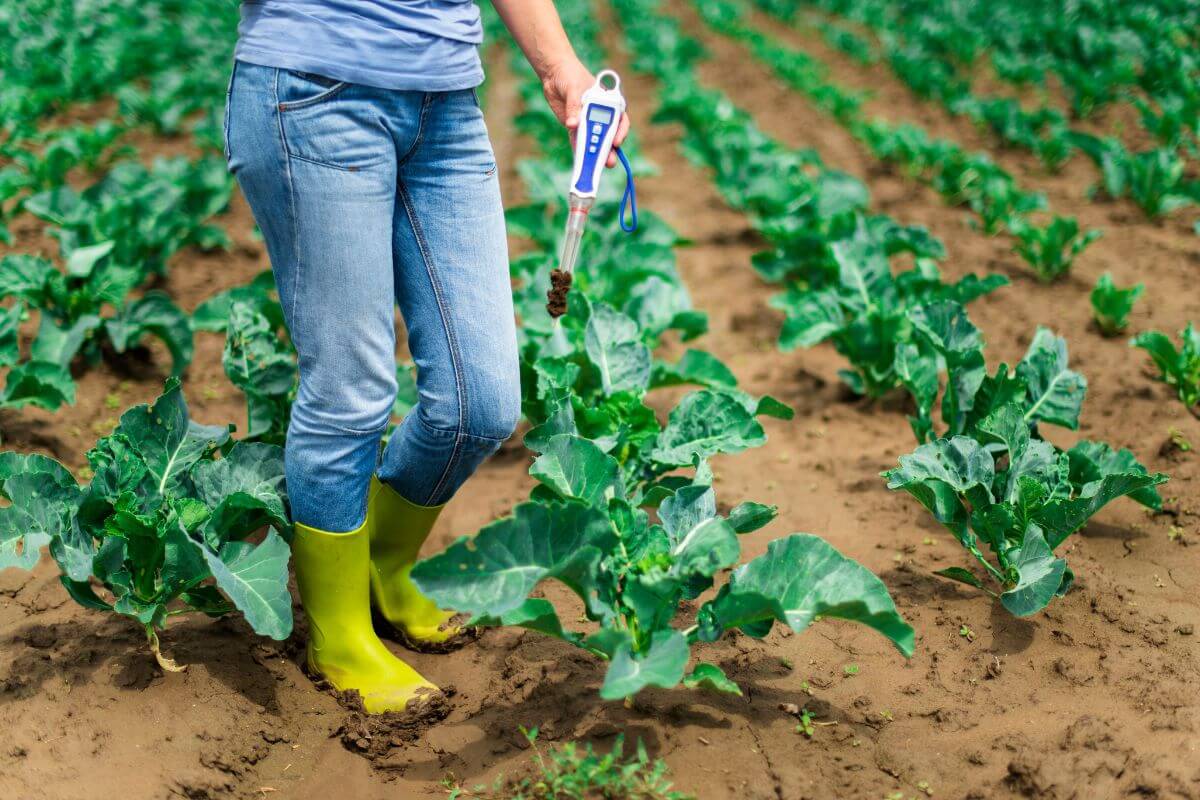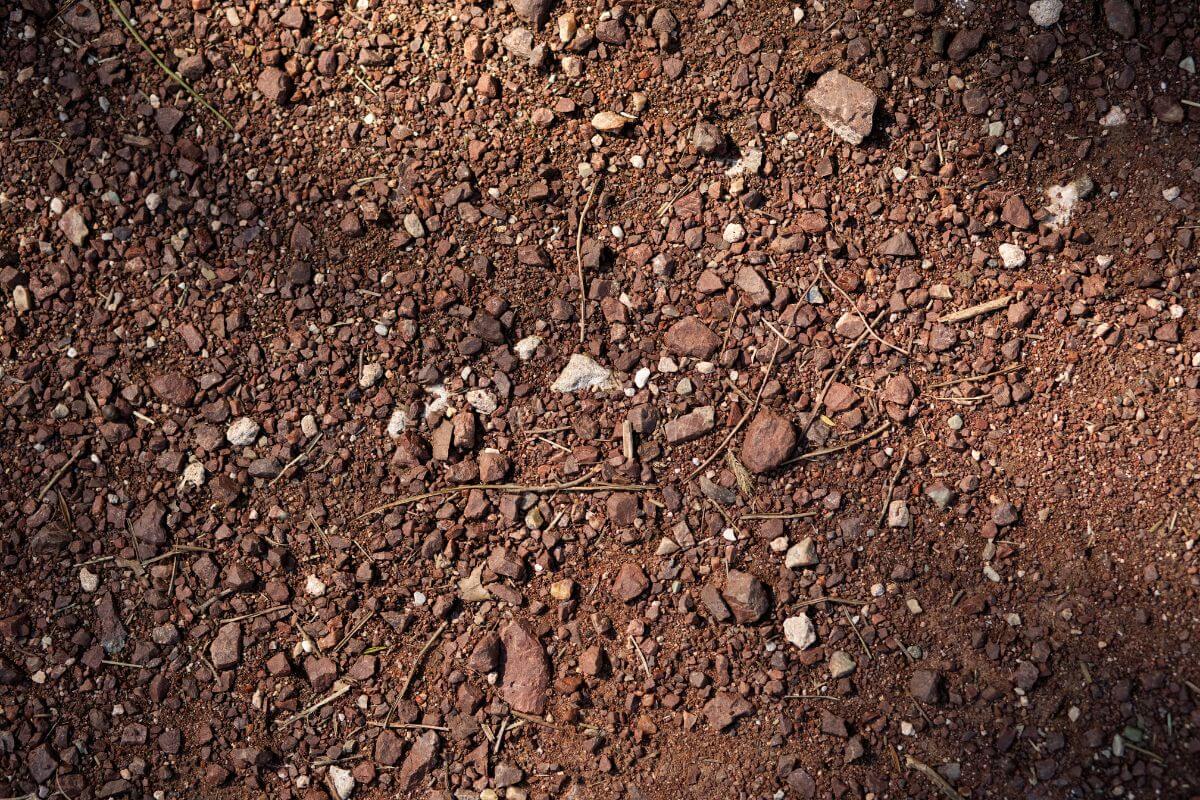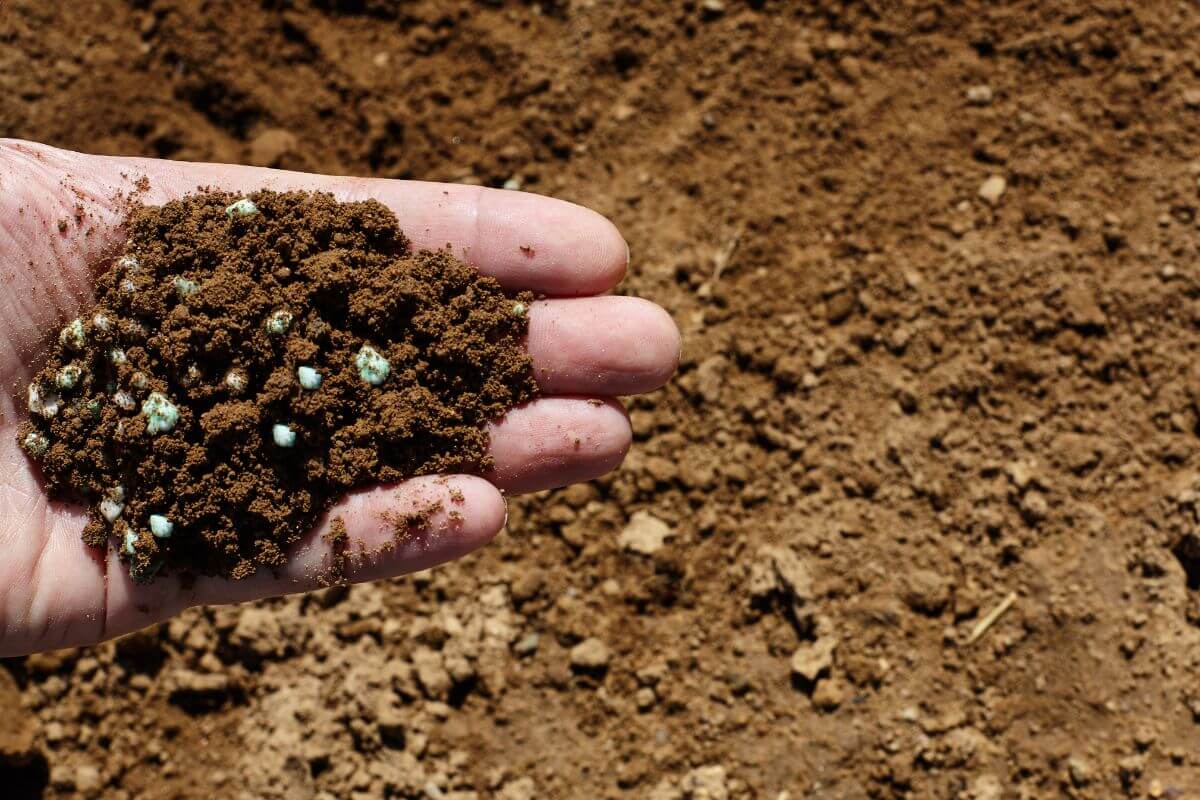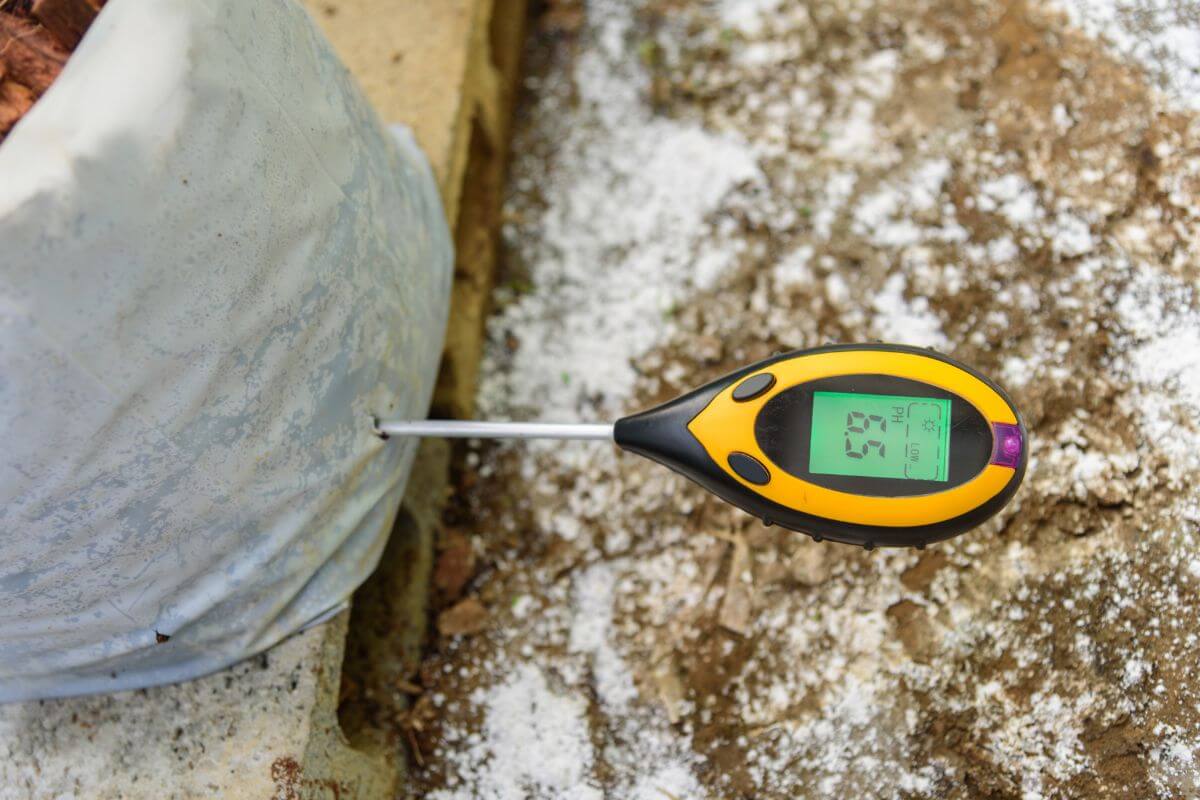Soil acidity is an important factor in determining plant growth. It also affects the health of soil organisms and plants.
When preparing soil for your garden, know that different plants have different needs. But in general, most plants like a soil that is slightly more acidic than alkaline.
In this article I’m going to take you through how to make your soil more acidic, as well as discuss the pH balance and what you can do to keep an eye on the acidity levels in your soil.
I’ll also touch on what to do if acidity levels get too high, and how to keep a healthy pH balance.
Why the Soil Acidity Level Matters

The acidity levels, or pH balance, matters a lot when it comes to soil. This is because it affects the essential nutrients within the soil.
The pH scale measures the acidity or alkalinity of the soil Some plants will prefer a soil that is more alkaline, but most prefer slightly acidic soil.
Acidic soils are common in areas where there is high rainfall and low sunlight. They are usually found in tropical climates. Alkaline soils are common in dry regions such as deserts.
A neutral pH level is 7, which is usually the pH of pure water. The scale runs from 0 to 14, with a lower number meaning an increase in acidity, and a higher number denoting an increase in alkalinity.
Plants like a pH level between 6 – 7, with 6.5 being the optimum pH for most plants. If your soil’s pH level is out of this range, your plants may suffer.
Some acid-loving plants include blueberries, rhododendrons and azaleas.
The best way to keep an eye on the pH balance of your soil is to buy tester strips or a digital pH level tester that you place in the soil.
If your soil pH level is too high, the plant can find it difficult to absorb certain nutrients, like iron. Alkaline soil prevents iron from changing into a form that can be absorbed by the plant. If your plant’s leaves become yellow between the veins, then it has an iron deficiency.
If your plants are having difficulty absorbing nutrients, you can try to make the soil more acidic.
7 Ways to Make Soil Acidic

There are several ways to increase the acidity of soil. Below is a list of various methods to lower the pH level and increase the acidity of your soil.
When you start to add soil amendments to make the soil more acidic, I recommend regularly checking the pH level to ensure you don’t let the soil get too acidic.
1. Add Sphagnum Peat Moss
While most sphagnum peat moss found in garden centers have a neutral or slightly acidic pH, Canadian sphagnum peat moss has a pH of 3.0 – 4.5 and will effectively reduce the pH of your soil, making it more acidic.
It is worth mentioning the Royal Horticultural Society (RHS) no longer uses peat moss for adding acidity to soil to cut its carbon footprint.
Peat bogs are great at absorbing the carbon released into the air that would otherwise contribute to global warming. Its destruction for peat moss is not supported by RHS.
2. Add Well-Decomposed Compost
If you are composting, you can test the pH of your compost to see how acidic it is. It will usually fall within the 6 – 7 pH level, but it can still help balance out alkaline soil if you add enough of it.
Organic matter that is high in acid includes oak leaves and pine needles, so if you have that in your compost, it can help.
Compost is a great way to balance out pH levels and improve the condition of your soil. If you are buying compost, ericaceous compost tends to be the most acidic.
3. Add Compost Tea
Compost tea can organically make your soil more acidic. However, the pH level of your compost tea will depend on your compost, so test the pH level of the compost tea before using it on alkaline soil.
If the tea is too alkaline, then you can add citric acid to lower the pH level before using it.
4. Apply Elemental Sulfur
Sulfur is one of the fastest ways to lower the pH of your soil. The bacteria in the soil will change the sulfur into sulfuric acid, which can decrease the pH quickly and effectively.
Iron sulfate is another option to use when trying to raise the acidity of your soil. Iron sulfate helps create ferrous oxide, which lowers the pH level. It can work faster than sulfur, but it will take more of the iron sulfate to work.
5. Add Fertilizers

Ammonium or urea-based acidic fertilizers are able to reduce the pH level of your soil, which will increase acidity. You can use either organic or chemical fertilizers that are especially formulated to increase acidity in soil.
One thing you’ll want to keep in mind though is the ingredients. I don’t recommend aluminum sulfate, ammonium sulfate, or ammonium nitrate because they can cause toxicity issues when used at higher concentrations. It can get into your groundwater.
6. Add Mulch
Mulch made of organic materials that will increase the acidity of your soil, include:
- Pine needles
- Pine bark
- Pine straw
- Oak leaves
- Wood chips from true cypress, as well as some species of eucalyptus.
7. Add Coffee Grounds
Coffee grounds can be added to your compost or sprinkled directly on the soil to help your soil become more acidic.
If you’re a big coffee drinker like me, this could become your go-to option.
How to Decrease Soil Acidity

Increasing acidity in the soil may not always be desired. A pH level of 5.5 or lower can cause serious problems for your plants.
Acidic soil increases some toxic elements in the soil, such as manganese and aluminum, that will have an adverse effect on your plant’s growth.
Aluminum stunts root growth, which impairs the plant’s ability to absorb water and nutrients. The plant will develop nutrient deficiencies, and if left untreated, will probably die.
If manganese builds up to toxic levels, then the plant’s growth above ground is stunted, causing discoloration and low crop yields.
The most common way of increasing the pH level of your soil is to add some kind of lime (not the fruit). Agricultural limestone is usually the go-to, and the finer it is ground, the quicker it will affect the pH of your soil.
You can make your soil more alkaline by watering it with a mixture of 1 tbsp of baking soda in 1 gallon of water.
Well-balanced compost can also be used to level out the pH of your soil. Always test the compost to ensure it has an acceptable pH. Compost can be a slow acting way of adjusting the pH balance, so if you have an urgent problem, stick to limestone.
Tips to Maintain Soil Acidity Level
The best way to maintain the acidity level of your soil is to dig in well-rotted compost on a regular basis. You can ensure the pH balance of your compost is correct by keeping the mix of green and brown material around 50/50.
See my other article, Composting Browns and Greens, for more details on why this balance is important.
Another tip would be to avoid using any fertilizer containing phosphorous, potassium, nitrogen, sulfur, or magnesium. These chemicals tend to build up over time and create excess acids in the soil.
Also, try to minimize the amount of synthetic pesticides applied to your garden. Pesticides contain compounds that contribute to increased acidity in soils.
Making Soil Acidic Final Thoughts
Even with amendments, soils that are naturally acid or alkaline do tend to revert to their original state over time.
Maintaining the soil pH level can be an ongoing job, so it is worth investing in a pH monitor, like this one, to keep an eye on your soil. That will help inform you to make adjustments early, before the soil becomes an issue.
Making Soil Acidic FAQs
How do you acidify soil quickly?
The best way to acidify soil quickly is to add sulfur to the soil. This method works well for acidic soils such as those found in Florida. However, it is important to note that sulfuric acid is toxic and should be handled carefully.
Do coffee grounds acidify soil?
Yes, coffee grounds will acidify soil, as well as add nitrogen to the soil. If you want to use coffee grounds for gardening, you should mix them into the top layer of soil.
Can you use vinegar to acidify soil?
Vinegar is used to acidify soil for plants such as tomatoes and cucumbers. The process works in two ways: first, the acidity of the vinegar reduces the pH level of the soil, which helps the plant roots grow better. Second, the vinegar absorbs some of the nutrients from the soil, making those nutrients available to the plant.
Does Epsom salt make soil acidic?
Epsom salt has more of a neutral pH level than anything else. It does not change the pH levels of the soil at all. Instead, it just makes sure there is enough calcium carbonate present to buffer against changes in the pH level.
Can lemon juice acidify soil?
Yes, lemon juice can be used for acidifying soil. Lemon juice has acidic properties that can help neutralize alkaline soils. If you want to use lemon juice to acidify soil, add 1 cup of lemon juice to each gallon of water. Then, pour the mixture into the soil. This method works best when the soil is already wet.
Do tea bags make soil acidic?
Yes, tea bags do make soil acidic. Well, actually the tea leaves do. Tea leaves contain tannins (tannic acid) which are natural chemicals that are toxic to some plants that don’t like acidic soil. When these leaves are brewed into tea, they release these toxins into the water. As a result, soil becomes acidic when tea leaves are used.
How long does it take for soil to acidify?
Soil acidity depends on several factors, such as soil composition, climate, rainfall, and land use. There is no clear answer to how long it takes for soil to become acidic. However, some experts say that it can take a year or more depending on the methods.
Do pine needles acidify soil?
Yes, pine needles will acidify the soil because they have a higher acidity level. Add them to your compost , mulch, or soil directly to lower the soil pH level.




